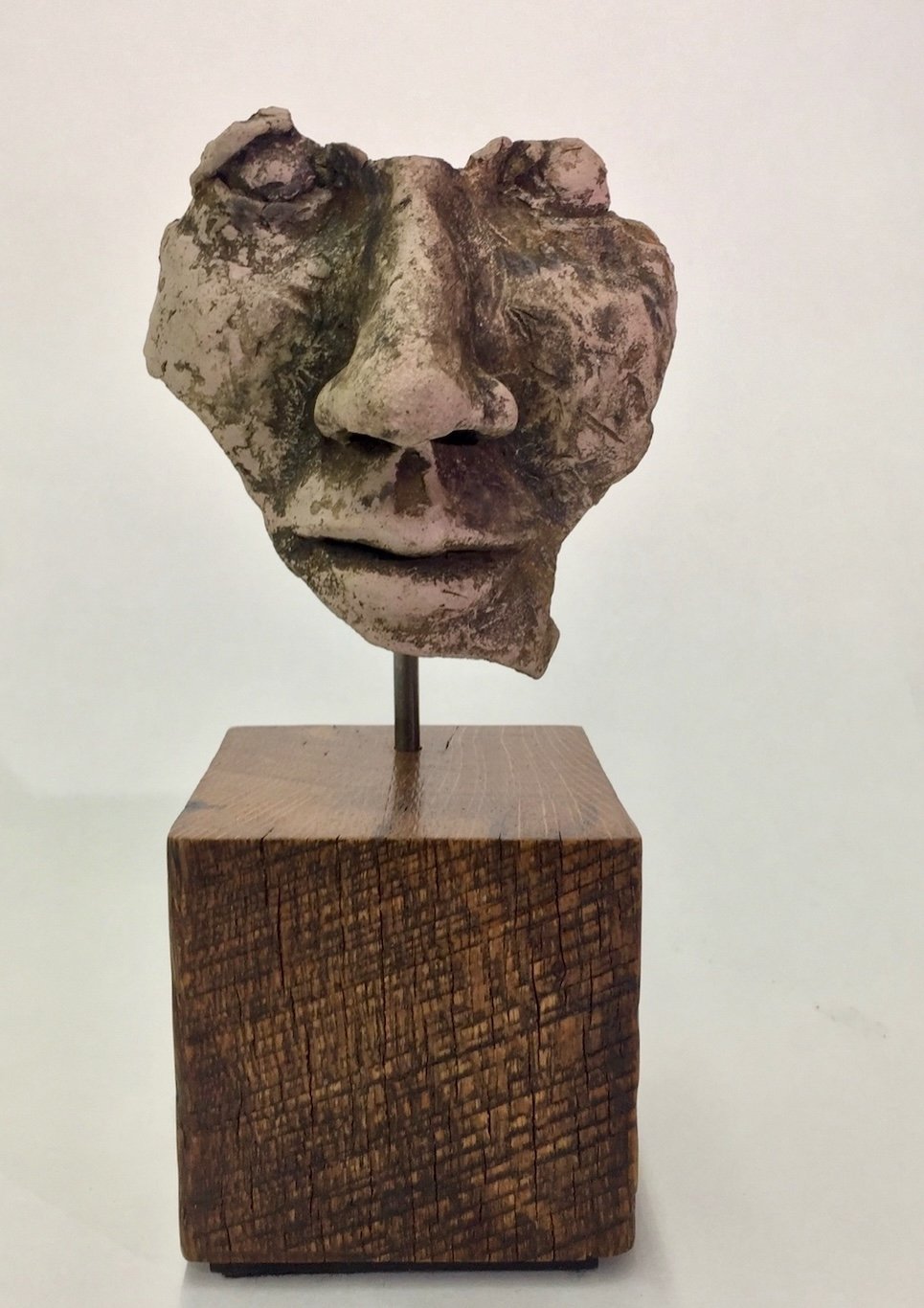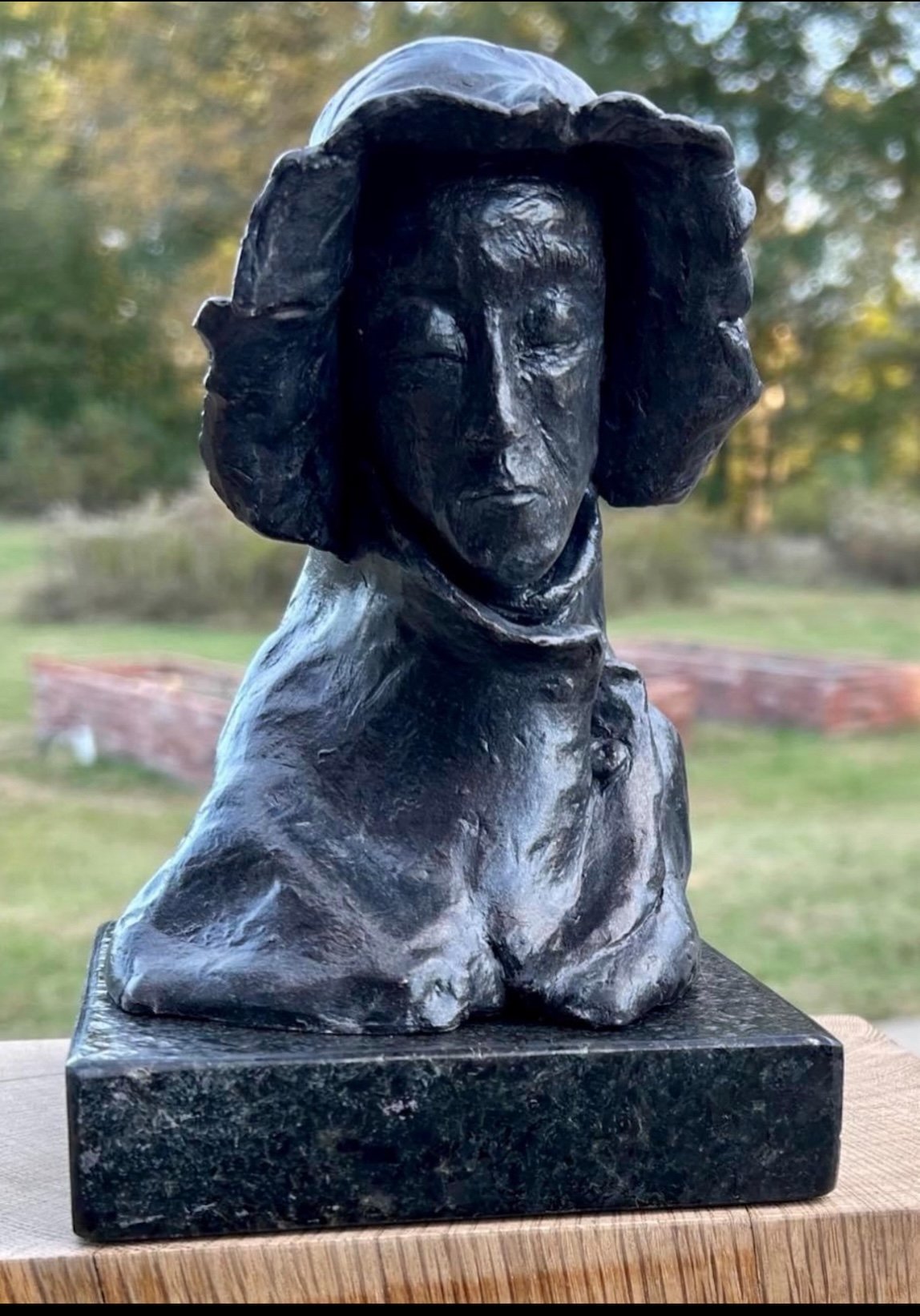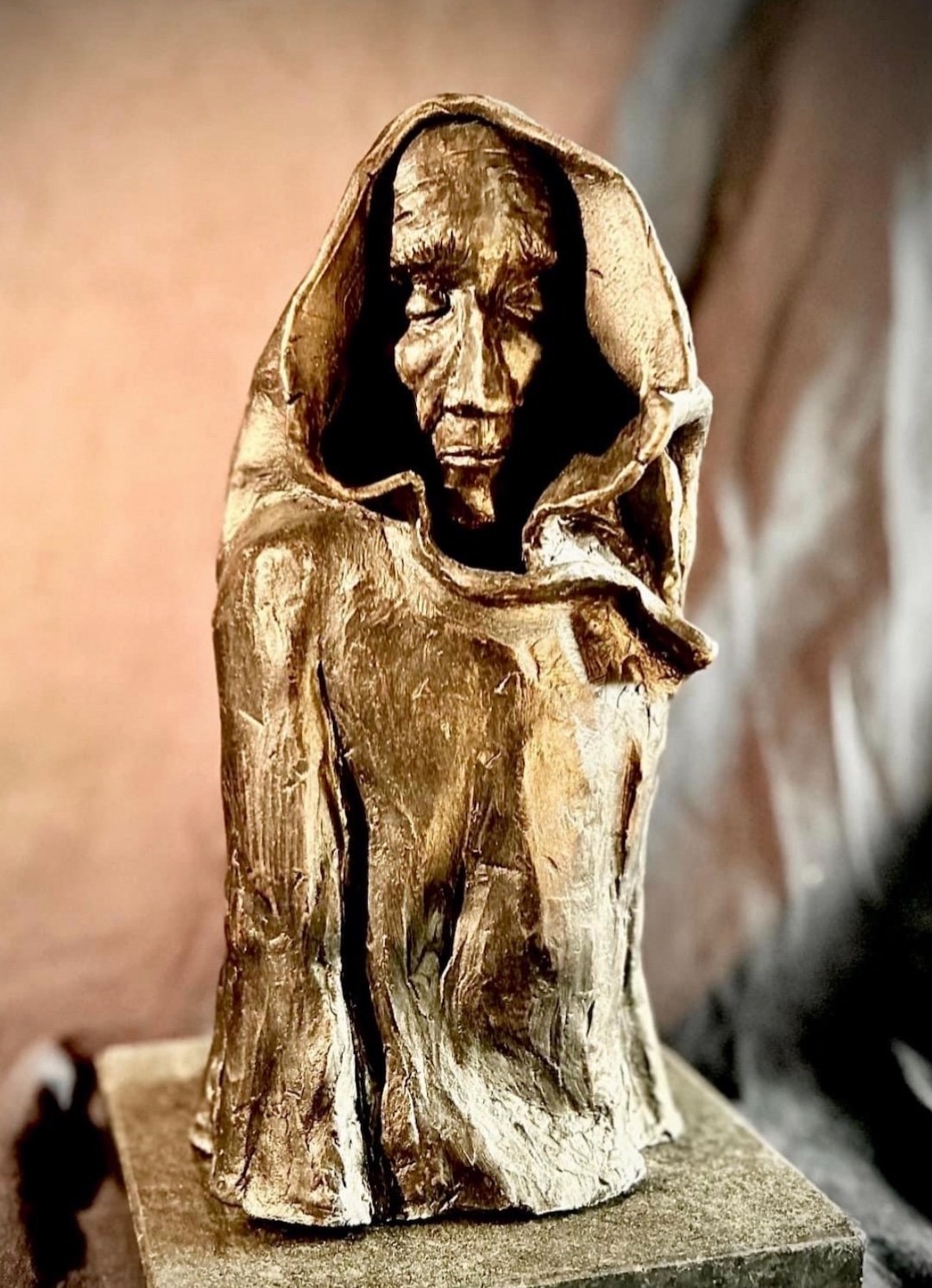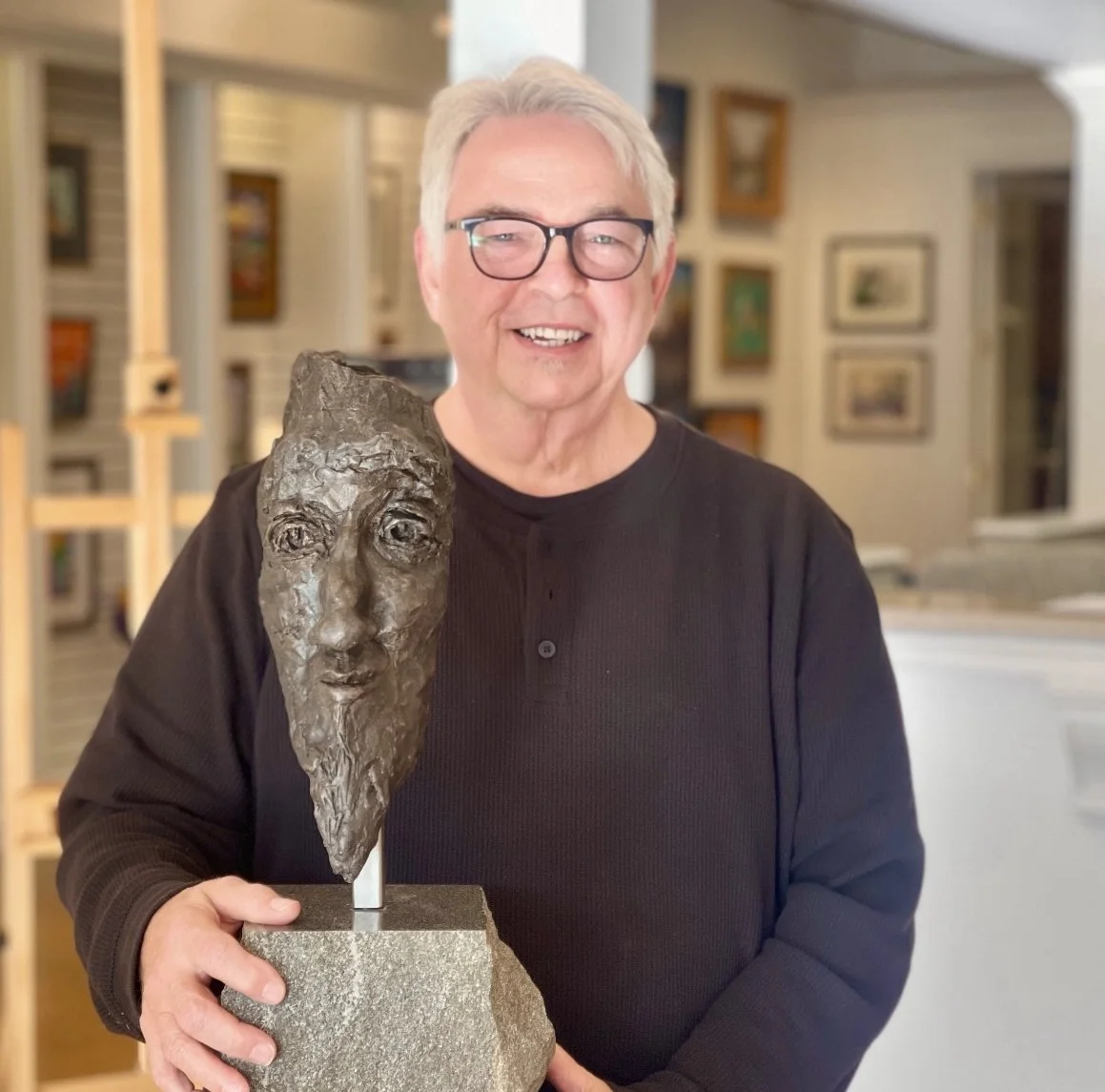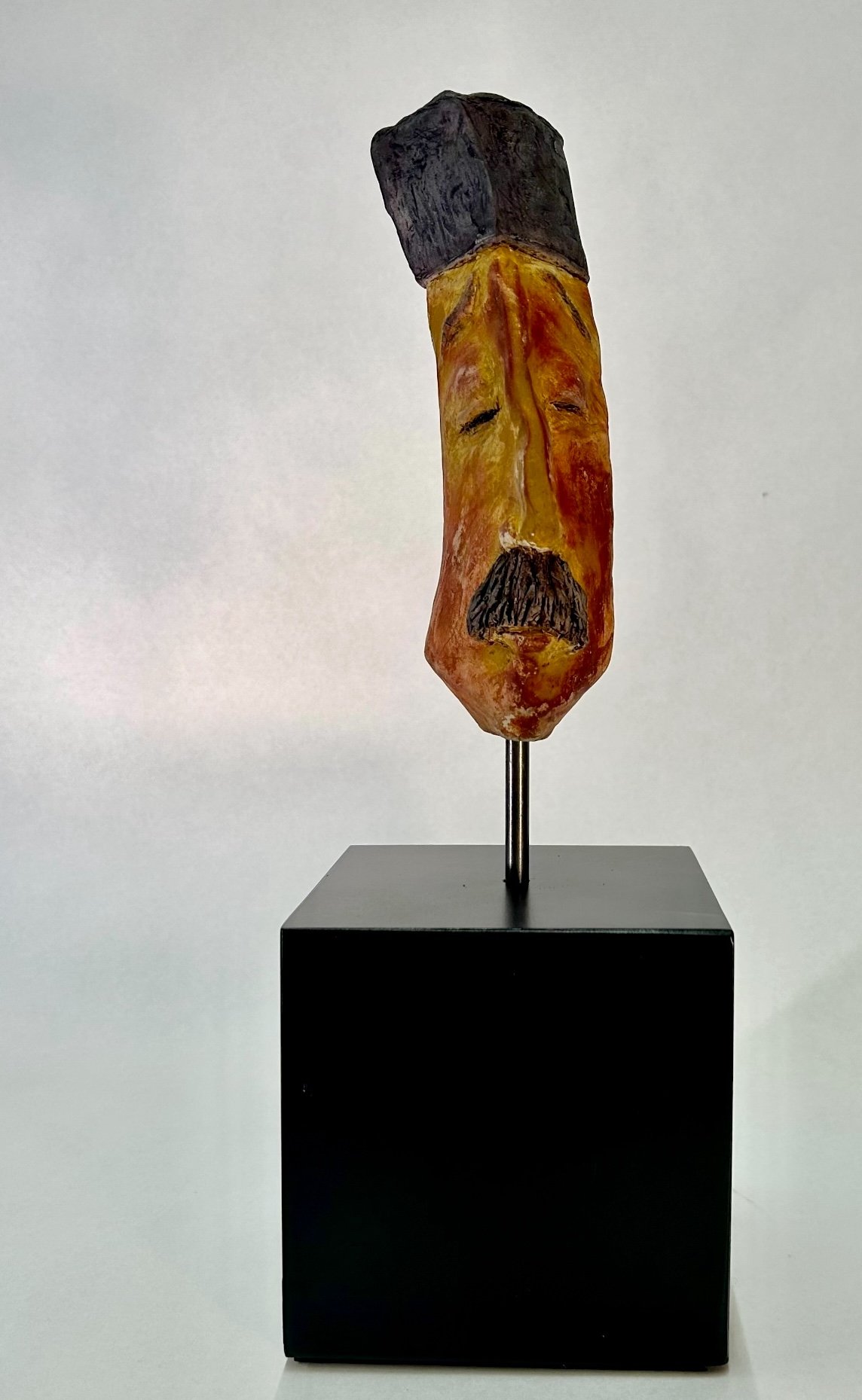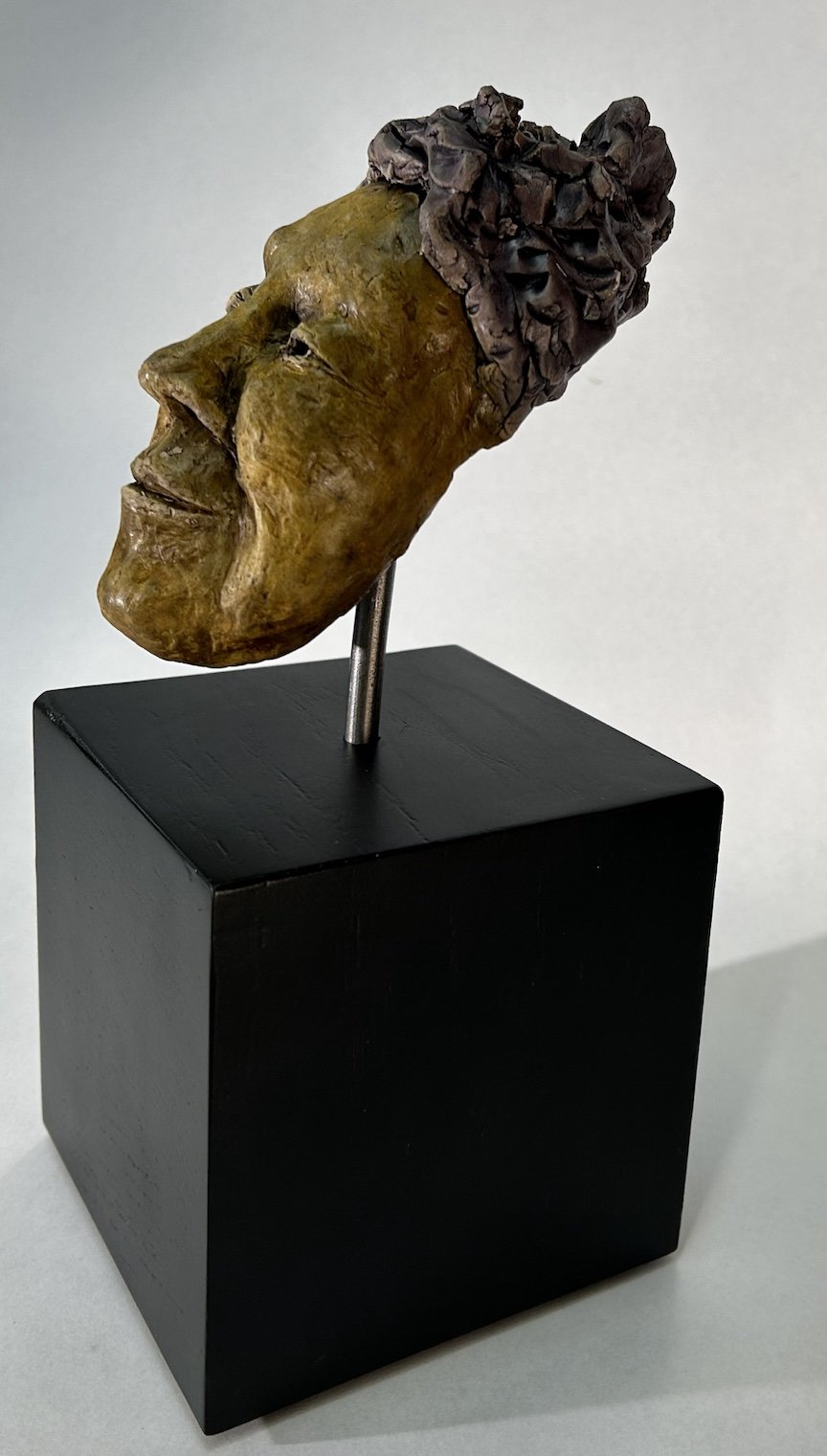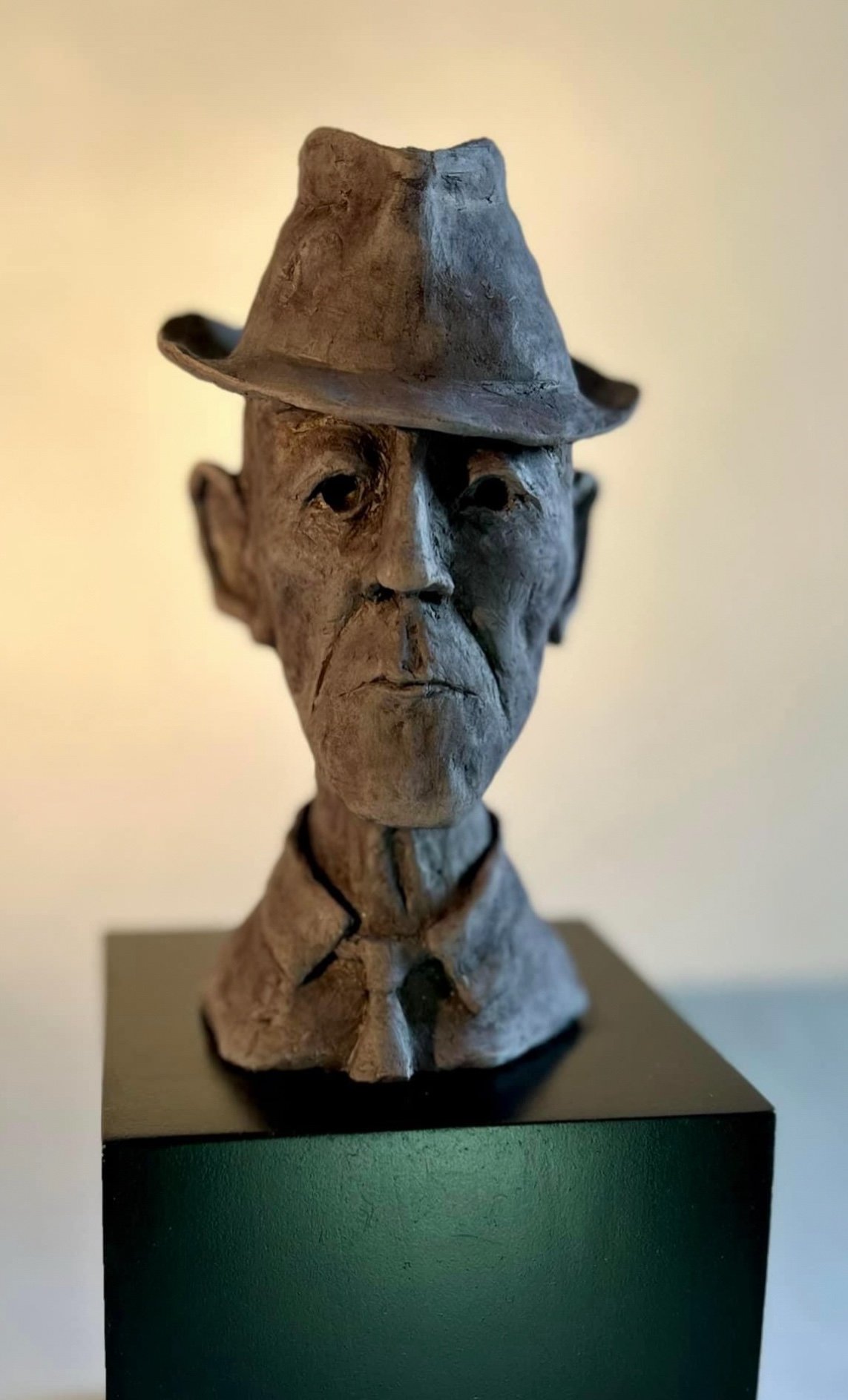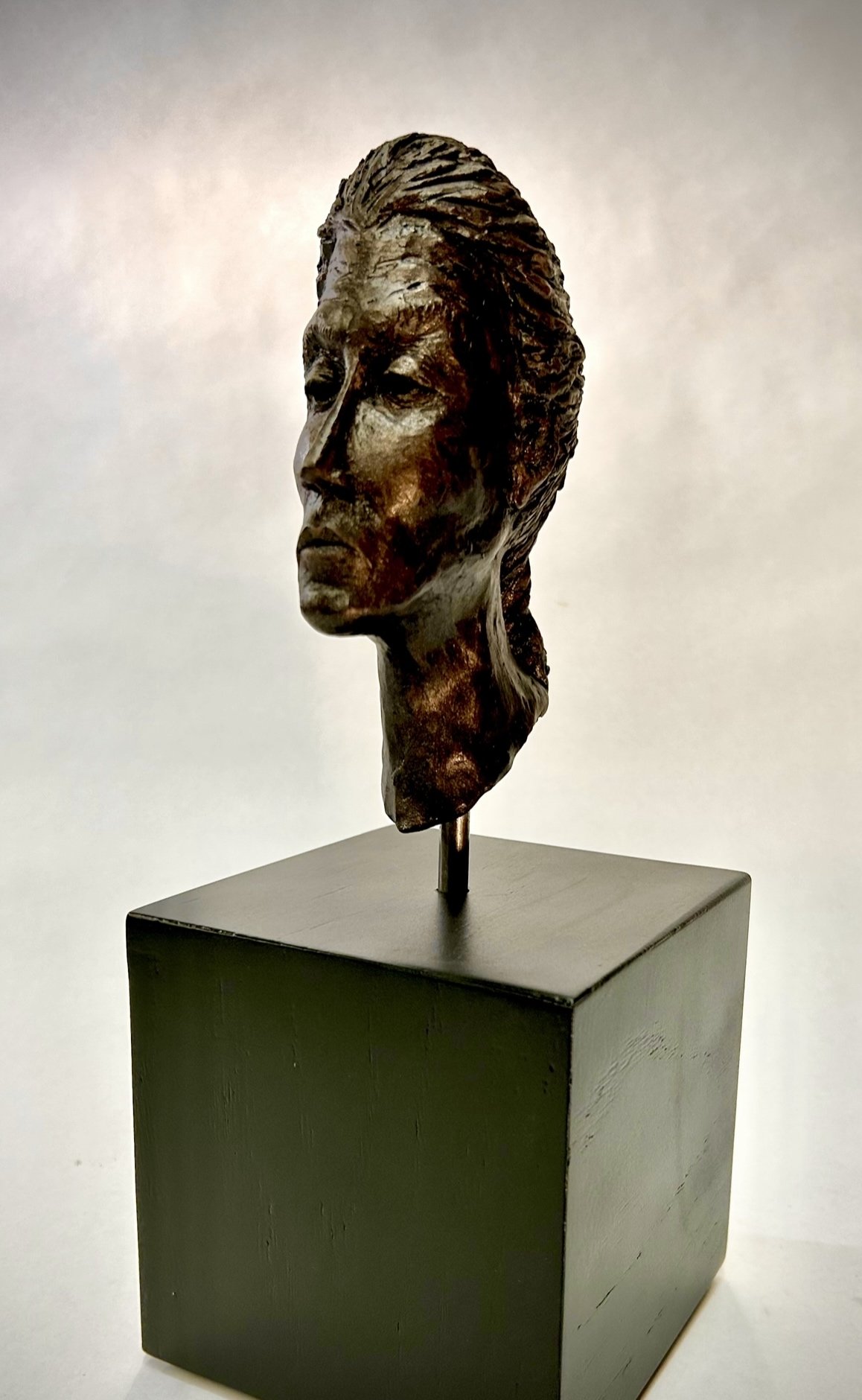Interview with artist Joe Martin
Joe Martin is a Little Rock sculptor whose primary medium is clay. His busts are expressive, often whimsical and mirror the joy he gets from the process. His work is part of private collections throughout Arkansas and beyond. More of Joe’s work can be found at Art Group Gallery in Little Rock and at his Instagram.
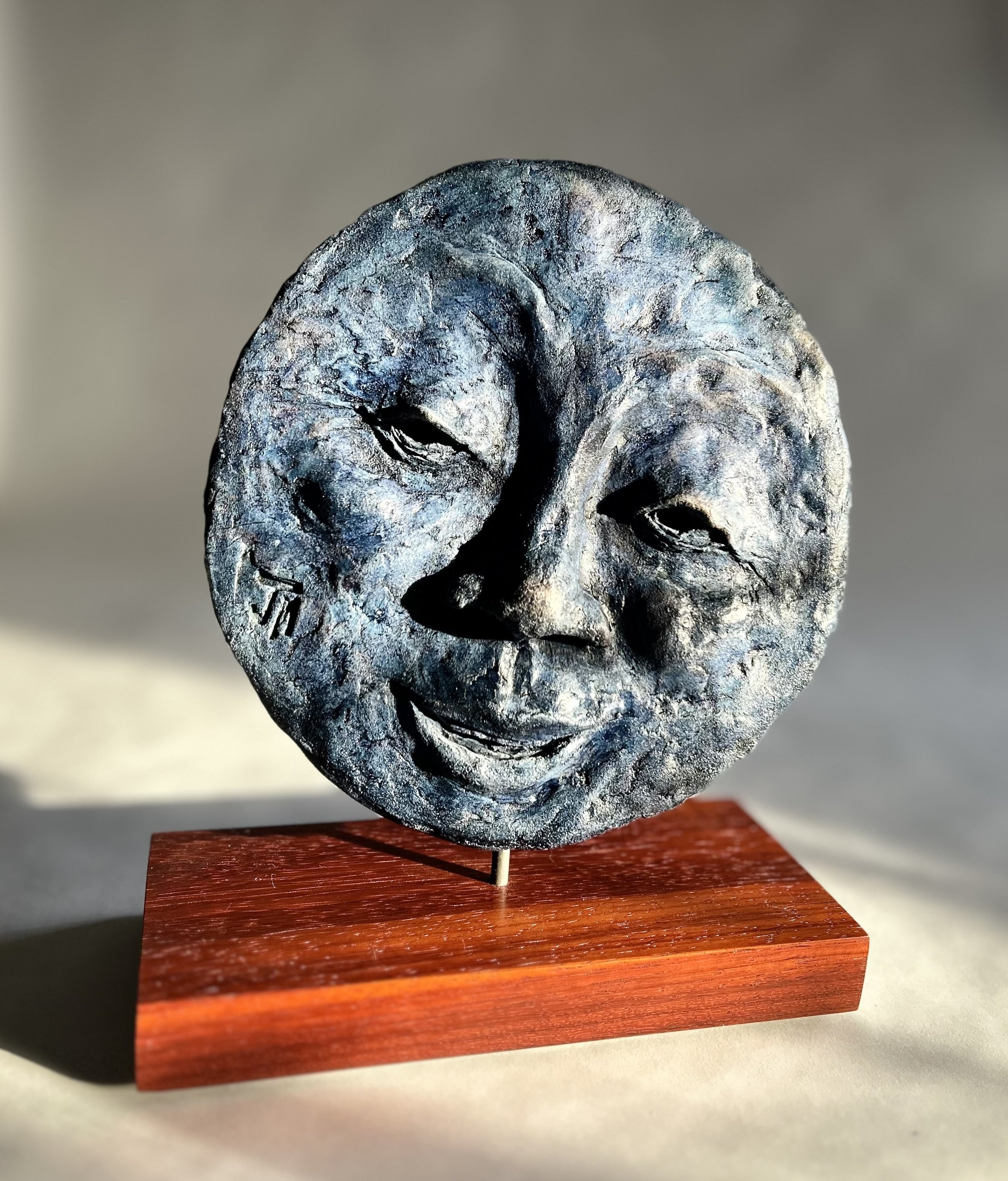
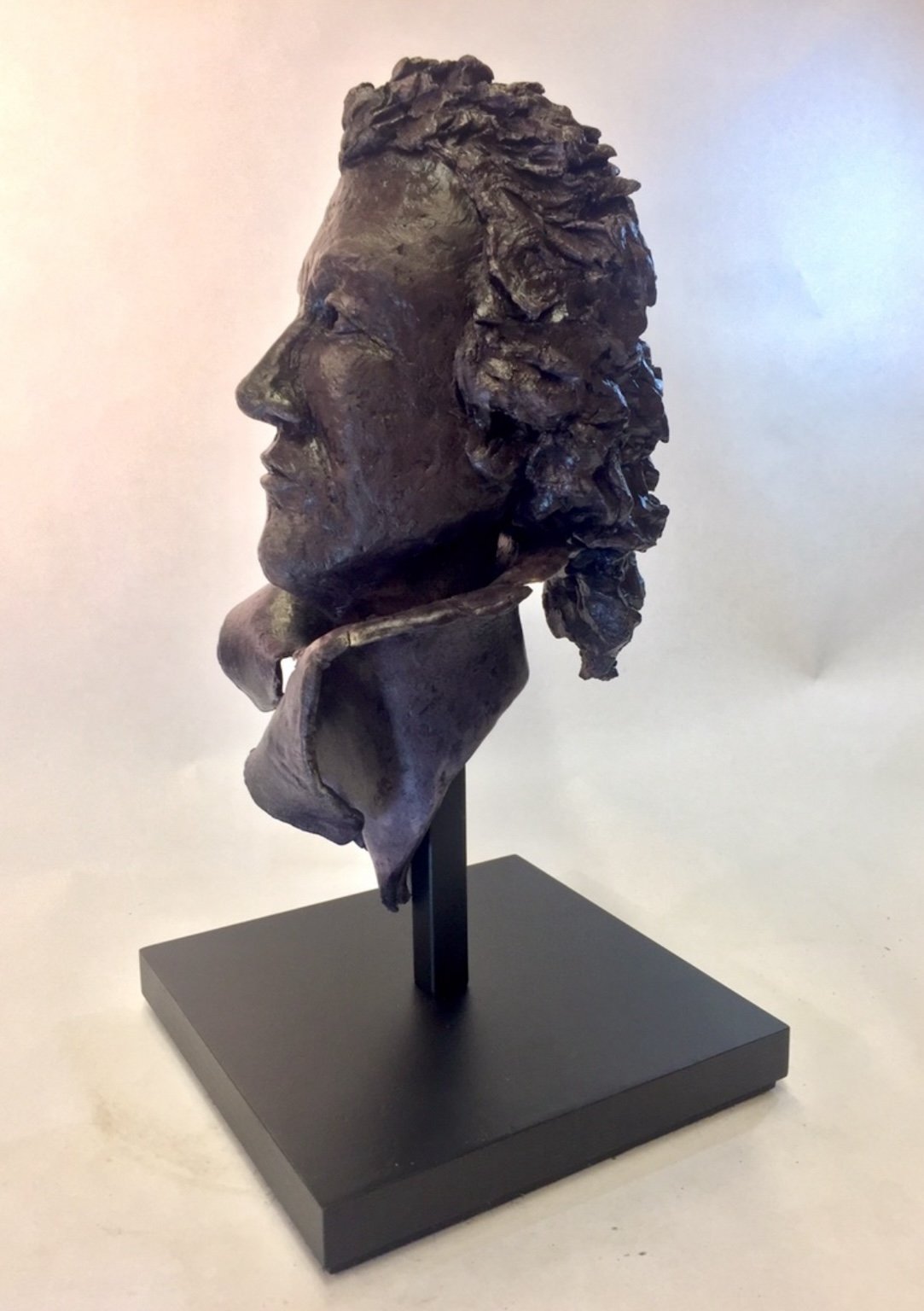
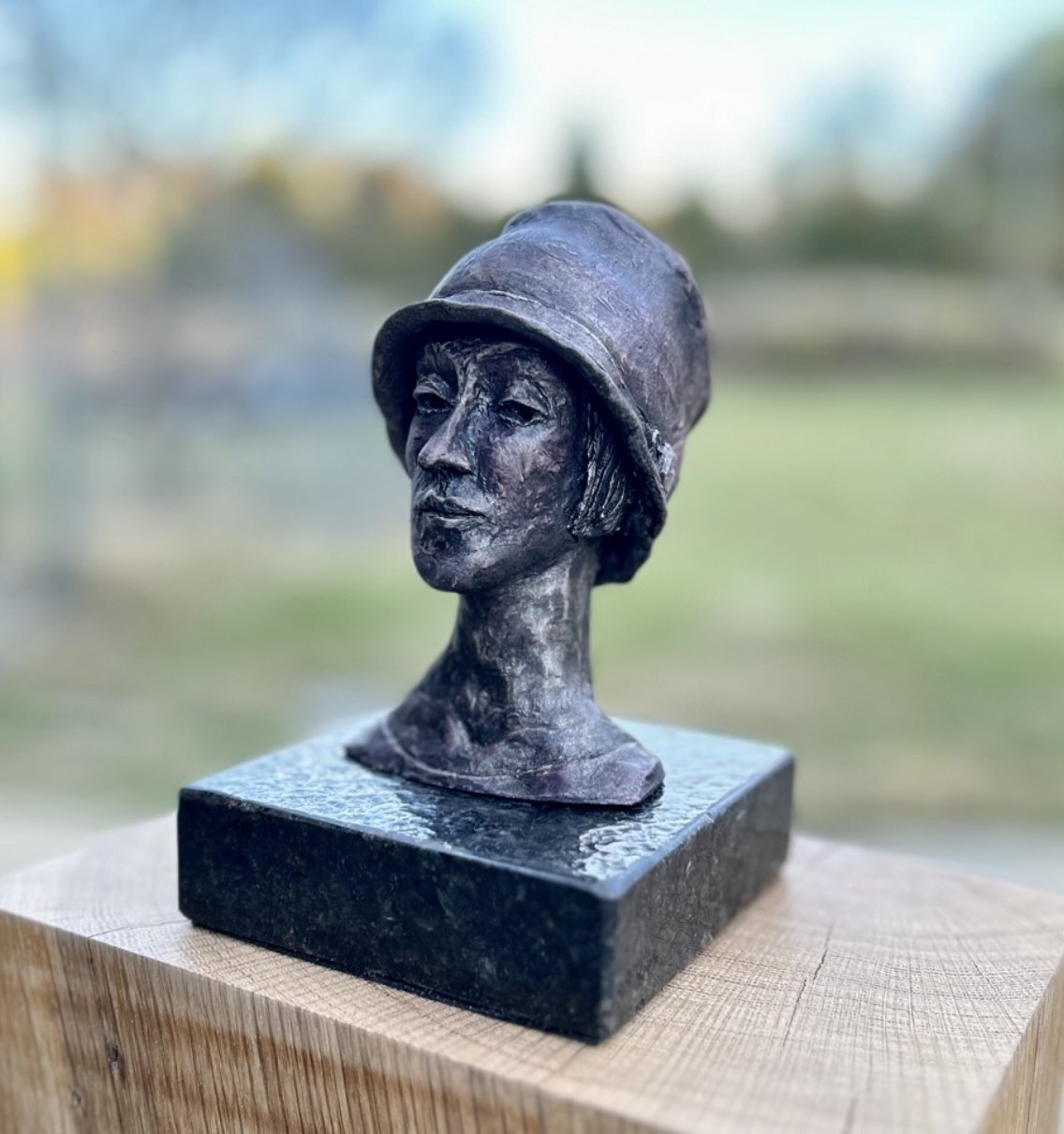
AAS: Joe, are you originally from the Little Rock area?
JM: Yes. I was born in Little Rock. My father was in the Air Force, and we lived many places including Germany, Colorado, New Mexico, Oklahoma, as well as Arkansas. Since the age of nine, my permanent home has been central Arkansas.
AAS: Was art something you were interested as a kid?
JM: As a child, I was more interested in music than visual art. When I was 12 years old, my mother bought me a guitar, and I taught myself to play. I wrote songs and sang, both solo and with small bands that I formed with friends. I was more interested in musical arts until I was in my 40s when visual arts became a catharsis for coping with the sudden death of my teenage daughter Jennifer. I quickly learned that expressing myself through art served me well in this tragedy.
AAS: What is it about working with clay that excites you?
JM: I love the tactile experience of working with clay and the fact that it is so forgiving. If you make a mistake, rework the clay and start again. I find joy dabbling with watercolor and charcoal; however, clay provides more fulfillment. Not only do I find gratification in bringing an idea to life through my hands with the clay, but the whole process of building a sculpture is satisfying and fascinating. This includes the bases I build that support the sculptures, and at times, they are more challenging than the sculptures themselves.
AAS: Do the faces you sculpt all come from your imagination? And what is it about faces that interests you?
JM: Many of the faces come from my imagination, but I also employ photographs and live models. It’s not uncommon for me to stop someone on the street and ask permission to photograph them. For me, faces are the most expressive part of a human being. Hands and body gestures can express moods, but all revealed emotions are shown in the face. The face is the most captivating and comprehensive part of the body. For instance, when I want to project a happy face, I often refer to anatomical illustrations to understand the skeletal and muscular dynamics of a smile. There is so much more to sculpting than just molding the clay. Many disciplines such as physics, chemistry, engineering, geometry, all play important roles as well.
AAS: So, the first time I met you was at a pop-up show at Art Group Gallery, and I knew Cassius had to come home with us. It is a terrific piece. But I never asked you if there was a story behind it.
Cassius, low fire clay, 6” x 6” x 12”
JM: I have known fellow artists Holly Tilley and Michele Moore for years and admired their work at the Art Group Gallery. When Michele approached me about doing a pop-up at the Gallery, I had just finished exhibiting at the Delta Arts Festival in Newport. Michele gave me a six-month window to complete the work. I was able to schedule each phase of the sculpting, patina application, selection and construction of the bases, and by December, I had prepared a large selection of new pieces. The pop-up was a success, and I have since placed many one-of-a-kind pieces in the Gallery for sale.
The back story on the sculpture you bought, Cassius (thank you!) is that I had just finished reading about the assassination of Julius Caesar. Cassius was one of the masterminds behind the betrayal of Caesar. This story inspired me to sculpt a Romanesque bust.
AAS: I especially love the way you exaggerate the features. But this does not turn them into caricatures, it somehow gives them added character.
JM: I think the exaggeration of features is an artistic license I employ, a signature of sorts. I especially enjoy sculpting outrageous hair and large noses. I am particularly drawn to the sculpture work of Alberto Giacometti, who is known for his distinctive, elongated sculptures depicting the human form.
“Most of my work develops by letting my hands form something from the clay, and if I like how it looks, I embellish on it. If I don’t like it, I smush it down (technical term!) and start over.”
AAS: Your sculptures are so expressive, especially Side Eyed. Tell me about that sculpture and your fascination with eyes.
Side Eyed, low fire clay, 4.5” x 4.5” x 14”
JM: This sculpture, Side Eyed, utilizes a technique of building upon an elongated slab of clay, to give depth to a flat surface. I like representing a variety of eye postures. The looking away represents a more reflective state of mind of the sculpture. Side Eyed was created without any reference material (that is, no model, no photograph). This work evolved from my imagination. The sidelong look of Side-Eyed depicts a sense of hidden suspicion. Most of my work develops by letting my hands form something from the clay, and if I like how it looks, I embellish on it. If I don’t like it, I smush it down (technical term!) and start over. I spend most of my clay time on faces. My pieces don’t start out to be silly or sarcastic but take on their own personality. The position of the eyes are sometimes planned but sometimes accidental. I have many “happy accidents”. I do not title my work until the end. Only then does the completed work speak its name to me.
AAS: Your sculptures have a joy about them. I think Contented is a good example of what I mean. Is there a story behind Contented?
Contented, low fire clay, 5” x 5” x 9”
JM: An example of my mood and general frame of mind being transferred to my art would be the sculpture, Contented. This piece was created over two equally beautiful spring days. It was perfect weather for raising the large studio doors to bring in the outside. I had a desire to create an image that reflected the completely “at peace, all is well with the world” feeling I had been enjoying during this creative period. I feel this sculpture embodies that sense of contentment.
AAS: Mr. Luther is such a pleasant and interesting looking fellow. Maybe the patina helps with that too. Do you know when you first start a piece how it will end up?
Mr. Luther, low fire clay, 5.5” x 6” x 13”
JM: Rarely do I know how a piece will end up. I have a general idea when I start, but I let the clay “speak” as I go along. Sometimes I end up doing something entirely different from the original concept. The whole creation process from the beginning is a stream of fluidity. I like to yield to the clay; I don’t always make it conform to me. The same applies to the patina. I have several favored options, but I let the fired piece decide that for me. Almost all of the pieces are soaked in a dye bath first. If that finish pleases me, then, like Mr Luther, that is all that is done to it. If the finish doesn’t express what I want to represent, then I move on to other options.
AAS: Some of your pieces are quite large. I would like to hear more about your process and your home studio.
Joe in his studio.
JM: My process has many steps but basically it depends on whether or not I have a deadline for an exhibit. One method is to establish phases from beginning to completion. An example would be sculpting pieces until my kiln is full, then applying patina to the fired pieces and finally fabricating the bases used. I find this “assembly line production” to be highly efficient; however, I prefer to work on several pieces at once even if they are all in different phases of completion. I am more creative when my structure is loose and spontaneous.
I am very fortunate that my home studio is situated on a picturesque river and is just five steps from my front door. It is large enough to house woodworking tools, steel fabrication equipment, and a large space for clay creation.
AAS: I have heard from so many artists I’ve interviewed how classes at the [then] Arkansas Arts Center and the instructors there really inspired them. Was that your experience?
JM: Yes, I found it inspiring as well. I was exploring many different visual art forms; but when I started sculpting, it was a eureka moment. Some of the instructors at the Museum School whom I want to acknowledge are Kelly Edwards, Angela Cummings, and Beth Lambert. Not only did I learn technical expertise from them; but more importantly, they all believed in me on a level more than I did myself. Each encouraged a confidence that I didn’t have. I want to acknowledge master sculptor Andy Huss for his invaluable contribution as a teacher and mentor. I also want to express my appreciation to my friend Susie Jacoby for her role as a benefactor in my independent studies.
